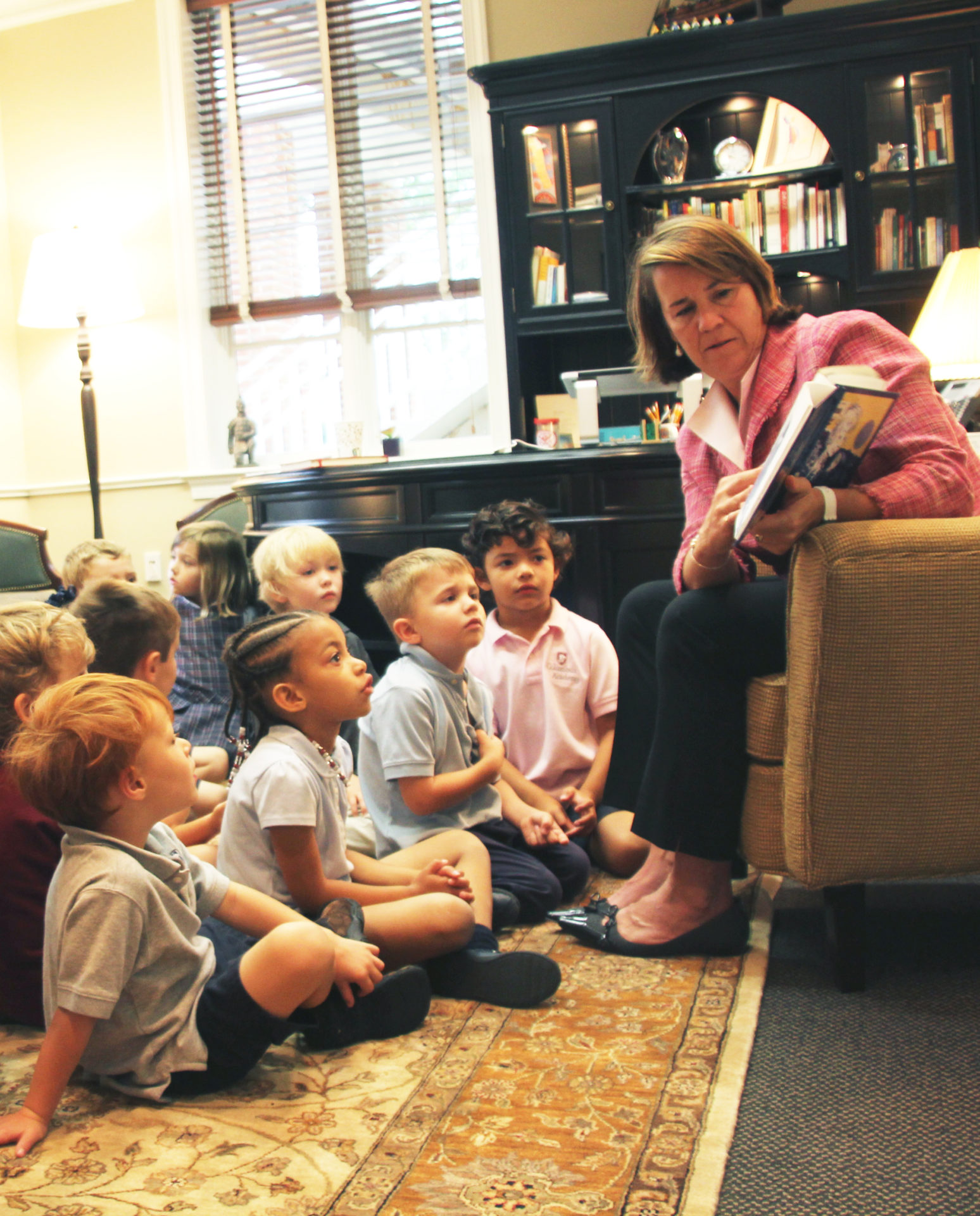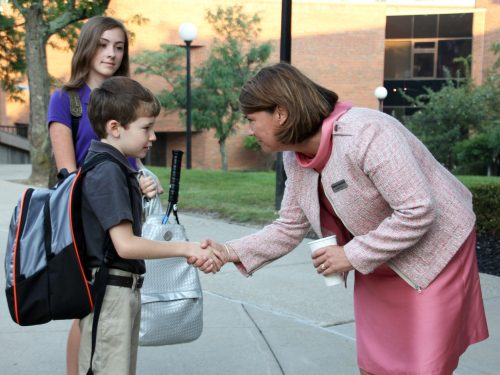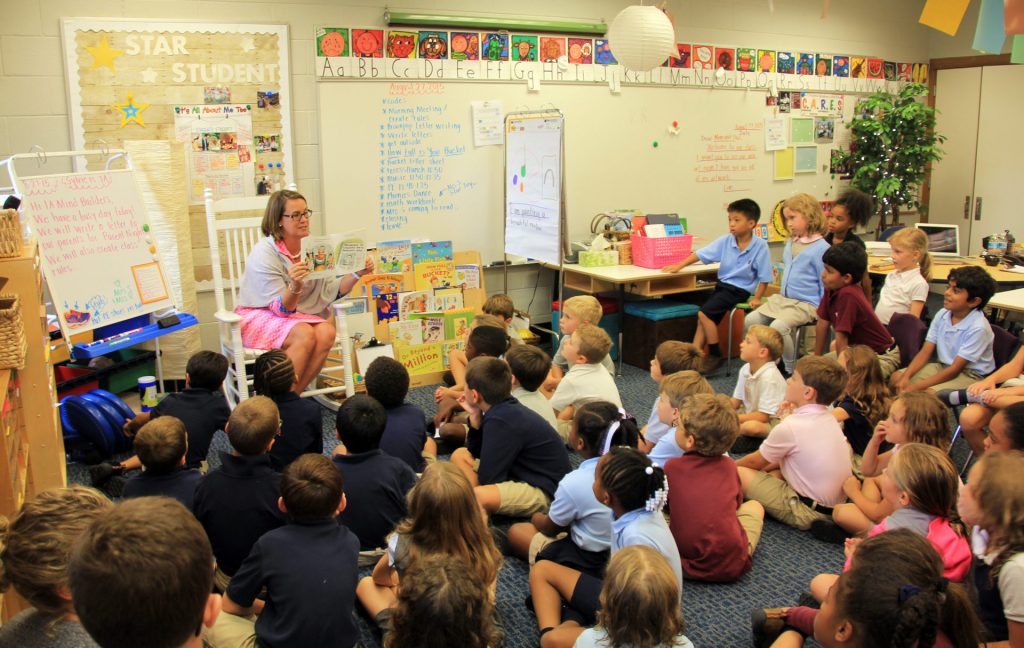A Conversation with Columbus Academy’s Melissa Soderberg

Originally in (614) Magazine, written by LAURA DACHENBACH
While Melissa Soderberg was waiting to visit with former Gahanna Mayor Becky Stinchcomb, she stared at a map hanging in City Hall looking for The Columbus Academy, where she had recently accepted the position of its eighth (and first female) Head of School. She couldn’t find it until Stinchcomb pointed to the 231-acre campus in the right-hand corner—a large blank section of the map.
Soderberg decided then that she didn’t want her new school to become an enclave. Now close to finishing her third year of leadership, she continues to reflect and reach out, making her school a relevant, global, and enterprising part of the Columbus community.
The Columbus Academy may seem bucolic; a cloistered environment which has given students a classical liberal arts education for the past 105 years—defying many current educational trends such as STEM education, skills-based learning, and career and industry readiness. As I talk with Soderberg, I am sympathetic, remembering the sense of unease I felt in college when I signed the paperwork to change my major to English and officially enter the surreal world of the humanities.
What Bill Gates did to the idea of a college education is what, in many ways, STEM has done to the liberal arts—pitting the two against each other, with technical majors usually seen as the more pragmatic choice. Yet Soderberg is unapologetic about teaching students to be thinkers.
“The benefit you get from the kind of education that emphasizes the humanity of [knowledge], even in math and science … is a long lifetime benefit. It isn’t translated through what you make in your first job,” she said.

Our conversation turns to critical thinking; the problems of measuring it, and the sense of accountability pervasive in a field that as Soderberg says, like health care, isn’t efficient, but is necessary.
“If you’re going to impress people with your ideas in the world, you need to have developed those crucial skills,” Soderberg says. “We’re very proud of how our students at Columbus Academy look people in the eye, are articulate, thoughtful, and receptive to lots of different ideas.”
Part of students’ responsiveness is Academy’s commitment to providing a global and culturally relevant education. In some ways, Soderberg herself is the culmination of a culture shift that started several decades ago as the school began to transition from a boys school to a fully coeducational and ethnically diverse environment. But Soderberg believes that her hire was a serendipitous event, a good match for someone who, as the daughter of a headmaster, has always known a life that has included school leadership.
“I didn’t necessarily aim to go become the first female head of any school,” she said. “And I don’t think the school aimed to go find somebody who was going to be a great alternative from what it had had before. I think there are certainly ways that I go about things that because I’m female, they inform the way I look at the world or my reactions to them.”
As a parent of two boys in the school, it feels natural for Soderberg to also be “mom” to Academy’s 1,085 student body. She gestures to a wall in her office displaying notes and pictures from some of the school’s youngest students, mostly girls. “I think that has something to do with an identification of, ‘She’s the person who runs our school and she’s female.’”
Despite education still being a profession dominated by women, female school leadership is still unusual. (In fact, as I waited in the main office lobby, I listened to a receptionist explain to a caller why Academy now uses the title “Head of School” as opposed to “Headmaster.”) This gap is sometimes attributed to the “work-life” balance that vexes female professionals. Soderberg feels fortunate that through the long hours of an executive position, she remains connected with her children’s lives through her work.

“If you’re running a school, you need to be around for everybody’s games and theater productions and art shows and musical presentations … the luck is that my children are often performing in those things.”
As a result of growth from its transition from a single-gender school, Academy has embarked on “The New Quest,” a $20 million capital improvement campaign to renovate and expand its facility. Soderberg nods as I mention digital learning and the perceived diminishing importance of the brick-and-mortar school building.
“Part of a good education is providing an opportunity for reflection, and there weren’t a lot of spaces for that here. The buildings are all … getting more open community spaces where students can reflect and be together,” explained Soderberg. “School is an experience … where the learning is all around you. A lot of the learning is bouncing the ideas off each other.” With expanded facilities, Soderberg sees an exciting future for Academy, one that includes private/public partnerships.
“We take up a lot of space, and it’s our job to be good at sharing,” said Soderberg. She explained that the school regularly invites youth football leagues to use its field and stands at no cost, allowing the organizations to raise money by charging for parking. “Increasingly, we’re going to want to bring people to our campus, host more open things, and be good neighbors in the community.”
Despite the pressures of return on investment (a buzzword Soderberg wishes would go away, along with “transparency” and anything to do with “high-stakes” testing or ranking), Soderberg is interested in seeing how far her locally well-respected school can go on a national level.
“I actually think this is a bit of a diamond in the rough school,” Soderberg said. “It educates the leaders of Columbus, and many people who are leaders send their children here. It has the kind of energy about it to be a dynamic entity.”
BROUGHT TO YOU BY



